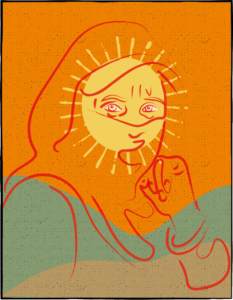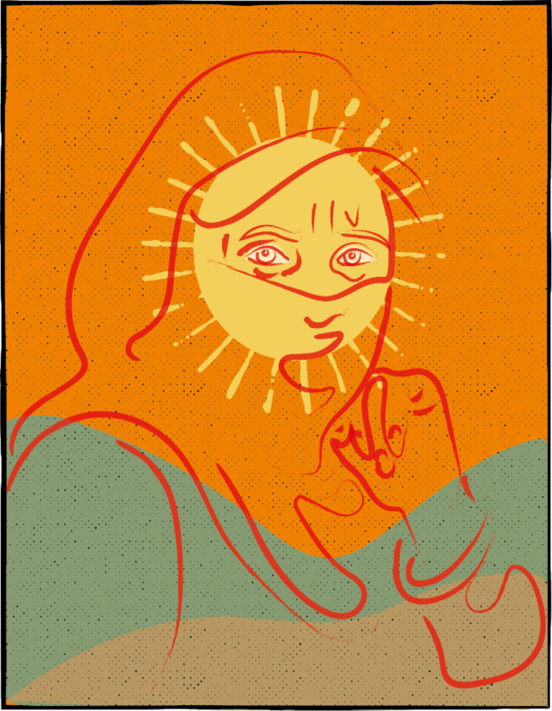For many marginalized people around the world, including refugees, the COVID-19 pandemic is not simply a health crisis, but it has also made existing poverty worse. Before the pandemic, more than 83% of Syrians inside Syria lived below the poverty line, while more than 90% of Syrian refugees residing in host communities in Turkey, Lebanon and in Jordan faced difficult conditions. Over the last year, many Syrian refugees lost their jobs as a result of the pandemic, with devastating impacts on their livelihoods. For the Refugee Labour under Lockdown project, researchers from the One Health FIELD Network, Syrian and Jordanian academics affiliated with the Council for At-Risk Academics and Syrian Academic Expertise, and Turkish practitioners from the not for-profit Development Workshop Cooperative, conducted interviews and remote ethnographic research in Turkey, Lebanon, Jordan and Northwest Syria. We spoke with 80 Syrian agricultural workers, 20 agricultural intermediaries and 20 agricultural employers. In our study, 75% of Syrian workers temporarily lost their jobs, when restrictions on travel and public transport cut their access to fields and orchards, and 94% have seen their income decrease in the first year of the pandemic.
Given Syrian refugees’ pre-pandemic levels of poverty, these findings are alarming. But what do they mean to a real-life refugee? Let’s hear from Farhan, a Syrian living in Qob Elias, a provincial town in eastern Lebanon. Farhan is a refugee, but he also works as a “shaweesh”, i.e. an agricultural intermediary, who brings together refugee workers and owners of fields, greenhouses and orchards. A shaweesh is a unique source of information about how refugee labour in agriculture is organised, and how refugees’ working conditions and wages have changed during the pandemic.
Farhan’s role is to coordinate seasonal workforces for 15 different agricultural employers in his region, and to organise jobs and transport for the workers in his group. Farhan also runs an informal camp for more than 400 Syrian refugees; most of the camp’s inhabitants also work for him. Farhan pays their wages, but also collects a yearly fee of 600,000 LBP (approx. $398) from each working family in the camp, which he uses to pay rental fees to the Lebanese man who owns the ground under their feet, as well as the camp’s electricity bills. If Farhan and his workers have a disagreement, he can evict them; during the pandemic, this increases the risk of homelessness for vulnerable refugees with nowhere else to go.
To understand the intimate relationship that Syrian refugees have with their agricultural intermediary, we need to go back in time. Like many Syrians in pre-war Syria, Farhan had worked intermittently as a labour migrant in neighbouring Lebanon, where he had learned the business of the shaweesh from a friend. By 2010, Farhan had assembled his own group of agricultural workers who regularly travelled with him from Syria to Lebanon:
“[In March 2010,] I had a group of 50 workers, males and females […]. The following year war broke out in my country, so I stayed in Lebanon with the workers I supervise, and I was joined by so many others. I had by that time between 100 and 120 agricultural labourers. Many sought refuge in Lebanon because of the war [in Syria]. […] When the war broke out, we secured heating for refugees in the camp and managed our affairs. We lived there in summer and winter with the hope that the situation will stabilise in Syria in 2012 and we return home. But as you saw, the war evolved. As a result, the camp still exists until today. I first used to go look for and gather workers, but then when people began to flee Syria seeking refuge, they began to flock to our camp. I myself became a refugee, I could no longer go to Aleppo. As a shaweesh in the camp, I was tasked by the Lebanese authorities with monitoring who enters and leaves the camp and with addressing any dispute. We began to build a tent for every family seeking refuge in our camp and help them with available means. The UN also offered some help and refugees of the camp helped each other. Some would offer money, others a pillow, sheets etc.”
As Farhan’s testimony shows, the COVID-19 pandemic is not the first crisis that he and his workers have lived through together – their shared story starts much earlier, in the early days of the Syrian conflict. His story also illustrates that in exile, not all Syrian refugees are alike: some, like Farhan, take on superior roles in work hierarchies and refugee communities because they serve as mediators between displaced people, locals and humanitarian agencies. As Farhan puts it, “a camp is like an institution with a manager and lower rank officials.”
In 2021, Farhan works with 110 female and 35 male Syrian workers, all from the same camp. In Lebanon, 85% of the Syrian workers in our study rely on intermediaries for finding jobs. As refugees, they often lack contacts and direct lines of communication with local work owners, knowledge of job opportunities and the bargaining power to hold employers accountable to verbal agreements. Each of Farhan’s workers is paid 10,000 LBP (approx. 7 USD) a day, of which Farhan subtracts 2,000 LBP – to cover his own salary, but also to buy fuel for the buses that take Syrians to the field. While Farhan’s own children go to school in Lebanon, more than 50 of his workers are under the age of 18, and the youngest are only nine years old.
When we spoke with Farhan in winter 2020, the agricultural season had just come to an end. During the autumn, his team of Syrian workers had been busy with harvesting potatoes and onions, now stored away in warehouses. The COVID-19 pandemic mostly affected their everyday lives through new regulations on the movements of Syrian agricultural workers:
“A vehicle used to transport more than 30 or 35 workers. Now, the municipality only allows us to transport four or five female workers in one vehicle, and they have to wear masks and gloves. […] Also, the municipality made us reduce the work shifts. We used to work three shifts, but now they reduced them to one and a half shift.”
At the beginning of the pandemic, these movement restrictions caused job losses, increasing job insecurity for Syrian refugees on an already volatile agricultural labour market – it also meant losses for Farhan. In winter 2020/21, he earned 600-700 USD per month, compared to 2,500-3,000 USD before the pandemic.
Like many migrant agricultural workers around the world, Syrian workers have also been left vulnerable to COVID-19 due to a lack of protections at work. Almost 40% of Syrian workers across study countries report that intermediaries and employers have not implemented any public health regulations during transport and at the workplace. While 97% of respondents wear a face mask during working hours, 84% are responsible for buying protective equipment themselves – most Syrians use traditional shawls to cover their faces. As workers in the informal economy, Syrian refugees do not have paid sick leave. Hence, many come to work even when they fall ill. According to Farhan, Syrian refugees in his camp are tested for COVID-19 by the UN every forty days, and so far no one has been positive. “We, the Syrians are anti-coronavirus and anti-all diseases”, Farhan says laughingly. As a precaution, however, he has banned big gatherings for weddings in the camp.
In Lebanon, the economic effects of the COVID-19 pandemic have exacerbated the country’s existing economic crisis – in refugees’ lives, this is felt most acutely through a loss of purchasing power. Agricultural workers’ wages were slightly raised in early 2021, but their actual worth in USD has declined because of the rampant currency inflation:
“1,500 LBP were worth one dollar. Now, 8,550 LBP are worth one dollar. We used to buy a bag of sugar weighing 25 Kilograms for 18,000LBP, now we buy it for 90,000 LBP.”
“A female worker used to make a net wage worth four dollars per day, this dropped to 1.5 dollars now.”
How do workers survive? In addition to being a recruiter and a landlord, Farhan also offers loans and advance payments to his workers:
“They do some work and we take good care of them. We give them (money) as much as they demand, as much as we can, we help each other until God helps us improve our conditions.”
Farhan’s story shows how displacement, labour and public health crises intersect to create unique vulnerabilities for Syrian agricultural workers. One feature of Syrian refugee labour in agriculture is its informality, the interpersonal nature of work arrangements, and the lack of official complaint mechanisms. Social relationships at the workplace are an important mediating factor for shielding refugee workers from, or exposing them to, labour exploitation and ill-health. During the pandemic, closer and more trustful ties with an intermediary might grant workers’ access to paid sick leave, and shape their decision to stay home, or keep going to work, when they experience symptoms of COVID-19. Conversely, there is a considerable risk that during the pandemic, financial dependency on intermediaries may have further entrapped Syrian agricultural workers in a cycle of debt, increasing the pressure on them to accept unsafe working conditions and low wages. We tend to think of the COVID-19 pandemic as a set of spectacular disruptions to established modes of working and global economies. However, findings from the Refugee Labour under Lockdown project indicate that for many displaced Syrians in the Middle East, the pandemic has entrenched problematic working conditions and relationships of dependency – and that is a problem.
Dr Ann-Christin Zuntz is a lecturer in Social Anthropology at the University of Edinburgh and the Principal Investigator of the Refugee Labour under Lockdown project.
Mackenzie Klema is a recent MSc Environment and Development graduate from the University of Edinburgh, and Research Assistant for the Refugee Labour under Lockdown project.
We will share findings from the Refugee Labour under Lockdown project during an online outreach workshop on 7th May 2021, 1pm UK time – more details soon on Twitter via @OneHealthFIELD

Ann will also discuss displacement and labour for Syrian refugees, seen through the eyes of the shaweesh, at a Refugee History event on 3rd June 2021.
All drawings are by the project’s artist-in-residence, Sophia Neilson. Discover Sophia’s amazing work on Twitter and Instagram @soofillustrates






Comments by Hashemi